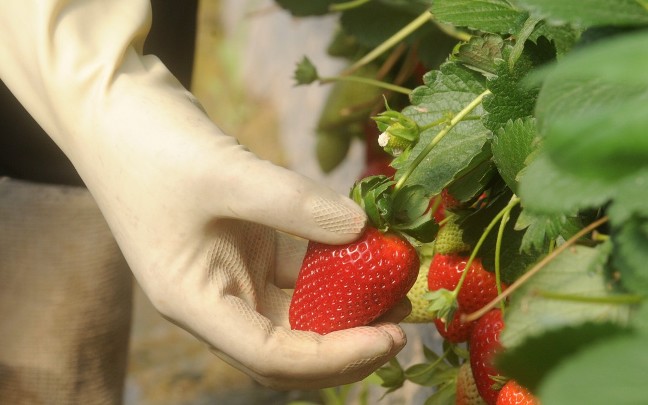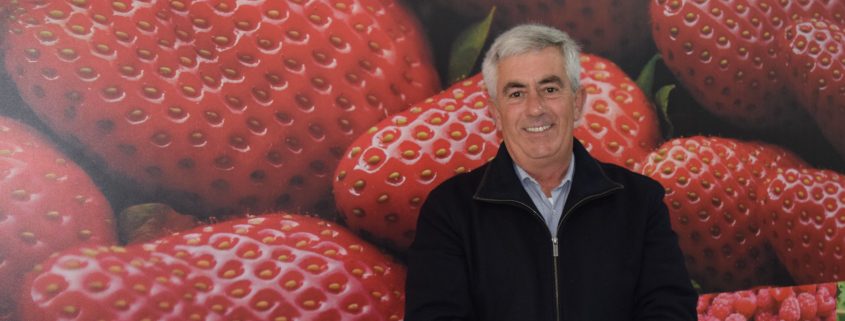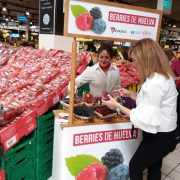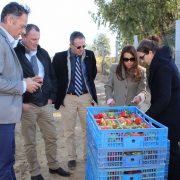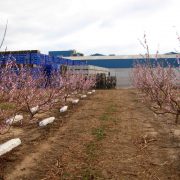The Huelva berries, diversification of production and markets
By Alberto Garrocho, president of FRESHUELVA
The red fruit sector in the province of Huelva, which accounts for almost 95% of Spain’s production, is in good health.
“Spain is still the main strawberry exporting country and grows gradually in the case of other berries, such as blueberries or raspberries”
In the province of Huelva, there are more than 10,000 hectares dedicated to the production of these berries in the campaign that has just begun, with a different evolution in each one of them. While the planted area of strawberries (5,400 hectares) is down 7% on the previous season, the rest of the berries increase by an average of 22%, reaching 2,538 hectares of blueberries, 1,932 hectares of raspberries and 160 hectares of blackberry .
These numbers, which are aimed at greater diversification of production, occur after the last campaign had a positive result for the red fruit sector in the province of Huelva. In fact, the campaign resulted in a total strawberry production of 294,650 tonnes and a growth of 2%, despite a 9% decline in cultivated area. In addition, turnover reached 395,150,000 euros, which is an increase of 8% compared to what was invoiced in the previous campaign.
The export data (the main destination of the Huelva berries, since only 5% is of national consumption) also endorse the good last campaign, since they exported 334,000 tons of red fruits, 20% more than in the previous campaign, with a value of more than 1,000 million euros, which means a growth of 23.8%.
Specifically, strawberries, with an exported volume of 266,000 tonnes, have reached 490 million euros; Followed by raspberries and blackberries, with 34,600 tonnes and 272 million euros; Blueberries, with 32,000 tonnes and 236 million euros; and gooseberries, with 1,500 tonnes and 12 million euros.
Especially notable has been the increase in surface blueberry, which from the year 2011 to 2016 has grown by 150%
The one of the red fruits is a sector that for years has been betting by the sustainability, applying techniques of integrated production and biological control of plagues. Currently there are almost 5,000 hectares of strawberry, 85% of the total, grown with integrated production techniques.
Social importance
With 80,000 jobs throughout the campaign, the red fruit sector has since its beginnings been able to adapt to the changes and the ups and downs of the market. Research, the application of innovative techniques, the introduction of new crops with their new varieties and the search for new markets has been a constant in a very important sector for the economies of Huelva and Andalusia and that has always been at the forefront of the Agriculture.
With this situation, the future can only be encouraging, although the incidence of rain and cold at the beginning of the campaign is very important and, at this point, we can be in a production 40% smaller than last year, whose campaign, we must remember, was very atypical because it was advanced one month.
However, coinciding with the fact that the climatic conditions in the rest of Europe are worse and that the last frosts have not affected the root of the plant, the truth is that it is getting to place, although in lower tonnage, a quality strawberry in the market being paid also at a price higher than last season.
With all the uncertainty of the spring months, we are confident that the strawberry campaign will be similar to last year and, in the case of blueberry, the increase in the area of this crop will not translate into a stagnation of the market and, therefore, an impairment in the price paid for the product.
“The future and the swings of the markets cause that the sector of the berries is continuously exploring new commercial possibilities”
Concerns that are currently underway, and we are working on it, to export our berries to northern Europe to the Middle East and to Asia, which is undoubtedly the most attractive market of all that we have yet to explore and to wich are directed the Government efforts, especially in view of the imminent entry into force of Brexit, which adds uncertainty to the sector, since, in the case of other berries, it accounts for 50% of exports.
YOU MIGHT ALSO LIKE:
➡️Freshuelva promotes innovation in berries through three operating groups
